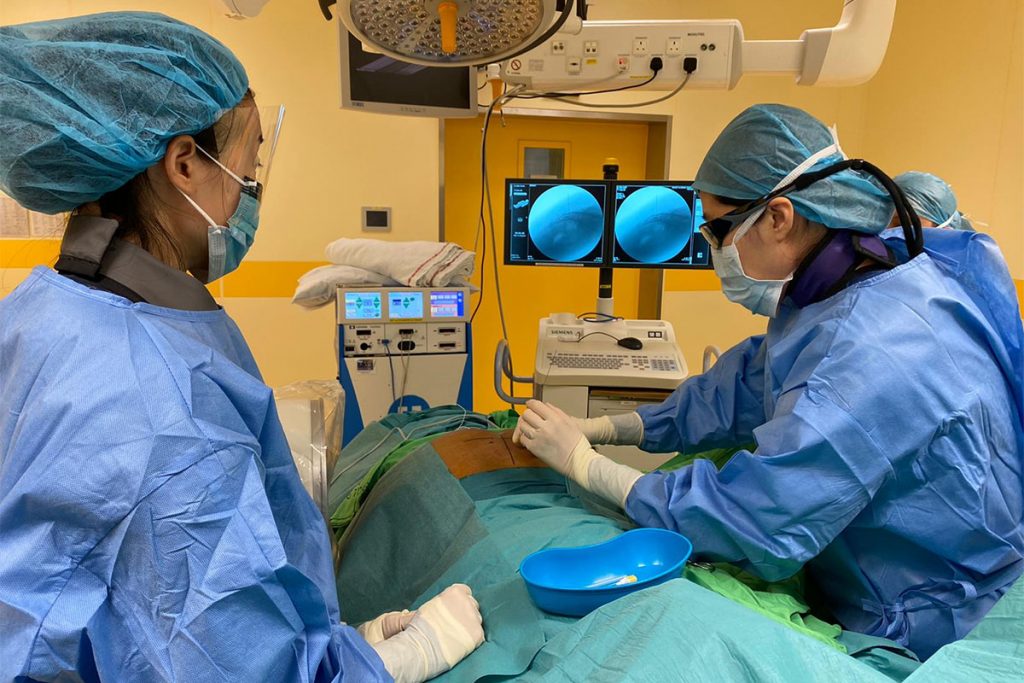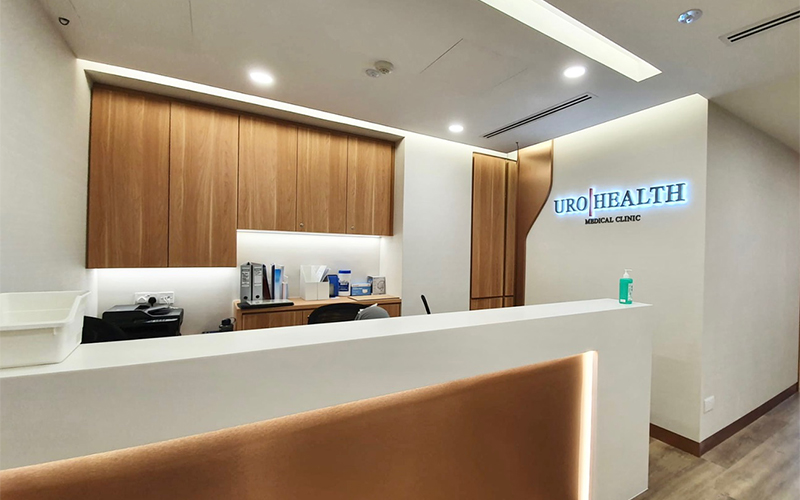Patient A was suffering from frustrating urinary symptoms with retention of urine and an overactive bladder. Dr Tricia Kuo, who subspecializes in functional disorders discussed extensively with patient A her treatment options and she decided for Sacral Nerve Stimulation (SNS) or Sacral Neuromodulation (SNM). SNS is suitable for patients whose urinary symptoms are caused by a poor communication system (abnormal bladder reflexes) between the nerves, brain, bladder and muscles which are related to passing urine. As a result, patients may suffer from urinary retention or overactive bladder. A full assessment prior to proceeding with this treatment includes urine tests, bladder diary, scans, bladder cystoscopy and a urodynamics study.
With SNS, an electric current is applied to one of the sacral nerves via an electrode which is a thin wire. The electrode is attached to an implantable pulse generator that stimulates the nerves linked to the bladder function. The purpose of the stimulation is to make the bladder function in a more controllable manner. The implanted device is an electrode and a stimulator device that is inserted under the skin. This acts like a “pacemaker” for the bladder. A hand-held programmer enables the level of stimulation to be adjusted and the implant to be switched on and off. 70-80% of patients who undergo SNS experience a significant improvement in their symptoms.
The treatment comprises of 2 stages, arranged weeks apart. In stage 1, the surgeon inserts a wire electrode through the lower back to lie in close proximity to the sacral nerve. Its other end is connected to a temporary extension lead which is tunnelled under the skin across the back and comes out through the skin. It is connected to a temporary external neurostimulator on the day after surgery. This stage is known as the test phase which allows the doctor to evaluate how much the patient can benefit from a permanent SNM implant. This evaluation can take about 1-2 weeks. A successful test phase is where there is more than 50% improvement in the urinary symptoms or parameters. Following a successful evaluation, the patient will then proceed to the stage 2 which is the implantation of the permanent impulse generator device. The impulse generator will be directly attached to the wire that was already placed in stage 1. The entire system will be under your skin. The hand-held controller will allow the patient to control the level of stimulation.
When behaviour modifications, dietary changes, pelvic floor exercises and oral medications, do not help to improve urinary symptoms from overactive bladder, or if someone has urinary retention without any physical obstruction, SNS is a viable option for patients to consider.














